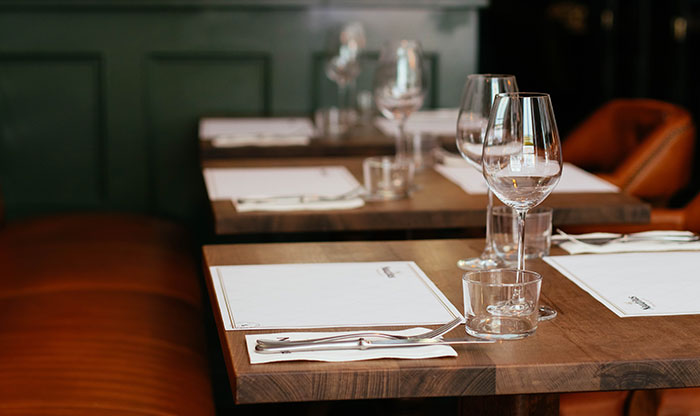5 Ways to Keep Your Employees’ Feet Safe in the Kitchen
What's the most important goal in the kitchen? It's not getting the food out on time, or even delivering high-quality fare every time – it's safety. You need to make sure all of your kitchen staff are as protected as they can be in a potentially very dangerous environment.
There are a lot of considerations here. In this article, we're going to focus in on a specific aspect of kitchen safety: your employees' feet.
Here are five tips to help ensure your staff's lower extremities aren't in danger.
Embrace Slip-resistant Shoes
This first tip is also the most important. Kitchen floors are slippery, and spills are inevitable. That means that even the cleanest, neatest kitchen in the world is going to pose a danger. Workers run the risk of twisted ankles, sprains, even broken bones. If an employee actually falls over, the damage can be even worse. These types of accidents are common: In 2010, for example, more than 20 percent of all workers who suffered slip and fall injuries in the private sector worked in accommodations and food services, according to the National Center for Biotechnology Information.
Requiring kitchen staff to wear slip-resistant shoes is the best way to cut down on these accidents. Specialty footwear featuring advanced, high-grip outsoles offer far more slip resistance than typical shoes, making this gear a priority for any restaurant or kitchen leader focused on employee safety. What's more, slip-resistant shoes for women and men come in a huge range of styles, making sure all your staff members can find footwear that keeps them both safe and stylish.
Get the Right Supplies
On a similar note, make sure you have the supplies on hand to support worker safety and cut down on slips and falls. Most importantly, you need make sure that you're using the right cleaning solutions and products, which means not relying on soaps and mops. As Kaivac pointed out, mops tend to spread around grease and food particles along with the cleaning solutions, creating a buildup of slippery residue. If you do need to use a mop, Society Insurance recommends applying a deck brush to remove grease hidden in tile pores, along with a degresasing cleanser.
Provide Training
Safety training is essential for any kitchen. Staff members need to know how to use all of the available equipment in a responsible manner, not to mention basics like never running with a knife and announcing when you're moving around with a hot pan.
Training can also go a long way toward protecting workers' feet, too. For example, employees can go through practice drills for mopping up spills immediately, without getting in each others' way. In fact, David Natalizia, founder of the consulting firm Dynamic Safety, told EHS Today that it's worth training workers on how to best walk around the kitchen. That may seem simplistic, but it can significantly reduce the risk of stumbles or staff collisions, especially during busy hours.
Implement Policies
Policies can also go a long way toward foot safety in the kitchen. While the benefits of slip-resistant shoes may seem obvious, not every employee will get on board if they aren't required to do so. So, for example, you may want to make it mandatory for staff to wear this footwear whenever they're in the kitchen, and also require that they take off these shoes if they're going outside, where the outsoles may be worn away.
Assign Roles
For any policy to prove effective, there need to be people to implement and enforce it. That's where assigned roles come in.
Consider assigning a staff member the responsibility of ensuring every worker wears slip-resistant shoes in the kitchen. Another employee may be assigned the role of checking slip-resistant footwear regularly to ensure employees' shoes don't need to be replaced.
Follow these steps – your employees' feet will appreciate it.
Employees and Your Bottom line.
Don't Forget To Share This Post!

6 Essential Leadership Tips for Executive Chefs
Leadership matters in any profession. Here are 6 essential leadership qualities executive chefs should possess to make their kitchens the best they can be.

Restaurant Safety: Some Ways to Reduce the Risk of Slips and Trips
Restaurant employees slip and fall on the job frequently. Here are some measures restaurants can take to minimize the risk of slips and falls.

Your New Food Business: Knowing FDA Regulations
The food industry is full of regulations. Restaurant owners must understand the legalese of food and the importance of being compliant with safety standards.